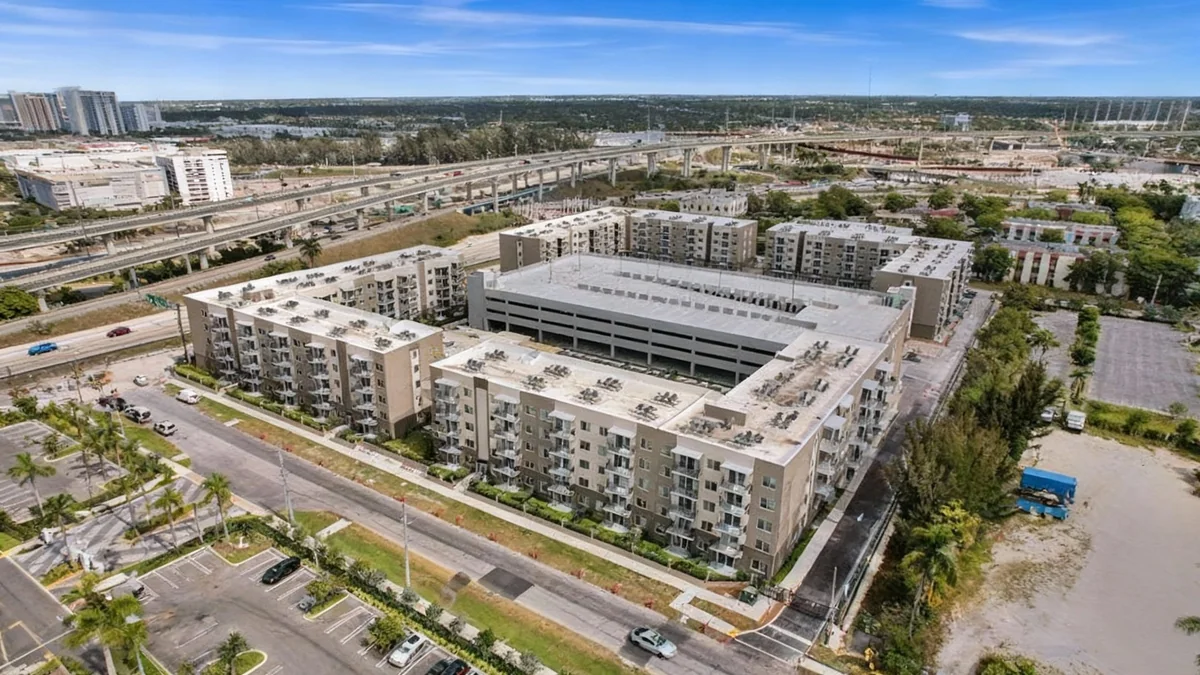A significant portion of America's real estate portfolio is becoming outdated, struggling to meet the demands of a changing population and modern technology. This trend, driven by demographic shifts and evolving work habits, is forcing investors and business leaders to reconsider the long-term value of properties that are no longer fit for purpose.
From office buildings to industrial warehouses, properties that cannot adapt to new consumer needs and business models risk becoming obsolete, presenting both a significant challenge and a new opportunity for strategic reinvestment.
Key Takeaways
- Demographic changes, including an aging population and low birth rates, are reshaping demand for both residential and commercial properties in the United States.
- Technological advancements and the rise of remote work have made functionality and modern amenities more important than location alone.
- An estimated 23.3 million square feet of U.S. office space is scheduled for demolition or conversion in 2025, outpacing new construction.
- Investors are shifting from passive ownership to actively repositioning obsolete buildings into new uses, such as converting old retail stores into childcare centers.
Demographics and Technology Reshape Property Value
The foundation of the U.S. real estate market is being altered by powerful demographic and technological forces. The country is experiencing historic low birth rates while an average of 11,000 Americans retire each day. This is creating a mismatch between the existing building stock and the needs of the current population.
The baby boomer generation, which holds an estimated $80 trillion in net worth, is not transitioning its housing as previous generations did. Many are choosing to age in place or downsize into smaller homes, often competing with younger generations for starter properties.
The Shift from Supply to Demand
For decades, real estate value was largely dictated by location and supply. However, the widespread adoption of remote and flexible work has fundamentally changed this dynamic. Employees and businesses are no longer tied to specific geographic hubs, allowing them to prioritize spaces that enhance quality of life and productivity. This shift means properties must now compete based on the value and experience they offer, not just their address.
Technology further amplifies this trend. A warehouse with low ceilings is inefficient for modern robotics, an office lacking collaborative spaces may fail to attract top talent, and an apartment without high-speed digital infrastructure is less appealing to today's renters. These properties, once valuable, are now considered functionally obsolete.
Obsolescence Across Commercial Real Estate Sectors
The problem of outdated buildings extends across all major real estate classes, from offices to industrial spaces. Each sector faces unique challenges driven by new economic realities and consumer behaviors.
Office Market Transformation
The office sector provides a clear example of this structural shift. With remote work becoming a permanent fixture for many companies, demand for traditional office space has declined. According to data from CBRE, the U.S. office market is set for a notable change in 2025.
Office Inventory Set to Shrink
In 2025, approximately 23.3 million square feet of office space is slated for demolition or conversion to other uses. In contrast, only 12.7 million square feet of new office space is under construction. This marks a rare period where total office inventory is expected to decrease, highlighting the scale of obsolescence in the market.
Buildings that once served as bustling corporate headquarters are now being evaluated for their potential to be converted into residential units, hotels, or other uses that better align with current demand.
Industrial and Retail Adaptation
The industrial sector is also evolving. Warehouses built for a pre-e-commerce era often have low ceilings and inefficient layouts that cannot accommodate the automation and high-volume logistics required today. These facilities are being rendered obsolete by modern distribution centers designed for robotics and rapid fulfillment.
In the retail sector, the decline of traditional brick-and-mortar chains has left a trail of vacant storefronts. However, these empty spaces are finding new life. For example, the closures of numerous CVS, RiteAid, and Walgreens stores present an opportunity.
"The wave of former CVS, RiteAid, and Walgreens closures shows how quickly prized assets can become obsolete. Yet their size, parking, and prime locations make them ideal for conversion into early childhood education centers, a growing need for millennial families."
This illustrates a broader trend where obsolete retail footprints are being reimagined for service-oriented businesses that cater to local community needs, such as healthcare clinics, fitness centers, and educational facilities.
A New Playbook for Real Estate Investment
For years, real estate investment was often a passive strategy reliant on rising property values and low interest rates. Investors could buy, hold, and sell, often using cheap debt to generate returns. That era has ended. Although commercial real estate lending has increased, with a 26% rise in the past year, borrowing costs are significantly higher.
With the 10-year Treasury yield above 4%, investors can no longer depend on financial engineering alone. Instead, the focus is shifting to operational expertise and strategic repositioning. Value is now created by transforming underperforming assets into productive businesses.
Examples of Asset Repositioning
Forward-thinking investors are actively finding new purposes for obsolete properties. This hands-on approach requires a deep understanding of market needs and operational management. Successful strategies include:
- Industrial to Storage: Older industrial warehouses with 20-foot clear heights, unsuitable for modern logistics, are being converted into climate-controlled self-storage facilities.
- Retail to Education: Vacant big-box stores and pharmacies are being repurposed as early childhood learning centers to serve the growing number of millennial families.
- Hospitality Evolution: While business travel has decreased, there is rising demand for experiential travel. This has led to increased investment in alternative accommodations like RV parks and campgrounds, which appeal to both retired baby boomers and younger families.
These examples demonstrate that future returns will likely come from actively managing real estate as an operating business rather than a passive financial asset. The ability to adapt a property to meet evolving generational demands is becoming the key determinant of its long-term value.
The Future of Property Investment
The American real estate landscape is at a critical juncture. The convergence of an aging population, new generational preferences, and technological disruption means that a large portion of the nation's building stock is at risk of obsolescence. For business leaders and investors, ignoring this trend is no longer an option.
Buildings must be viewed as dynamic tools that can either enhance competitiveness or drain capital. The winners in this new environment will be those who can identify obsolete properties and successfully transform them into valuable, functional spaces that serve the needs of today's and tomorrow's economy.
The challenge is to see beyond the empty shells and recognize the potential for renewal. By treating real estate as an active operating business, investors can unlock new sources of growth and ensure that these assets contribute to economic productivity for years to come.





